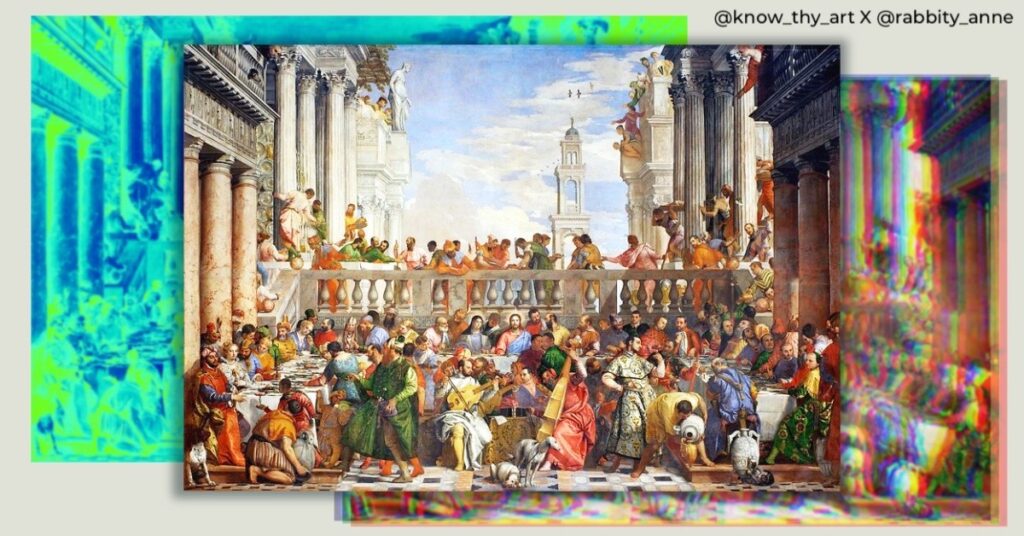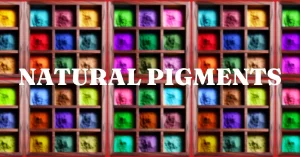The Mannerism art movement was argubly the first expressive art movement. Not expressive just for the painter but also for the characters in the painting. Mannerism was a period of artistic rebellion and innovation. Emerging after the High Renaissance, it dared to break the rules of classical harmony and proportion. Instead, it embraced a world of elegance, distortion, and artistic freedom. Let us explore the Mannerism art movement in this post.
What type of art was created in the Mannerism style?
Paintings, sculptures, literature and even frescos were made during the Mannerism art movement
Mannerism art was created and popular during which years?
The Mannerism art movement took place roughly between the 1520s to 1590s.
Where was Mannerism art made and popularised?
Mannerism art was made in Italy and other parts of Europe
Who are some famous Mannerism artists and artworks?
Volterra Deposition by Rosso Fiorentino

The Nobleman with his Hand on his Chest by El Greco

The Wedding at Cana by Paolo Veronese

Interesting Observations about Mannerism Art – Art Op-Ed:
While the Mannerism art movement FAQs are essential for learning the factual details, the artistic purpose is equally important. The people painted in Mannerism artwork will usually have exaggerated positions. They dramatically express the manner of the character in the scene that is painted. This is the speciality of Mannerism artworks. This is the exact opposite of Classicism where the human figures were painted true to their actual contortions. Classicism had no dramatic hand gestures or positions. Mannerism broke that tradition to be a little more expressive and evocative. This quality of Mannerism makes it easier for even non-artists to understand what is going on in the painting. Kind of like being able to tell what an actor is trying to convey if they are over-acting in a film even if it is on mute.
Which art movement(s) came before the Mannerism period?
High-renaissance and Classicism came before the Mannerism art movement.
Which art movement(s) came after the Mannerism period?
Baroque art movement came after Mannerism.
Top 10 Artworks of the Mannerism Art Movement
Parmigianino’s “Madonna with the Long Neck”: A Bold Twist on Tradition

Parmigianino’s painting “Madonna with the Long Neck” is a masterpiece that often sparks discussions about artistic daring. The elongation of the Madonna’s figure and the inclusion of a serene baby Jesus create a sense of graceful distortion, challenging the conventions of ideal proportions.
Jacopo Pontormo’s “Deposition from the Cross”: A Composition of Emotion

Jacopo Pontormo’s “Deposition from the Cross” is known for its emotional intensity. Observers often focus on Pontormo’s innovative composition, which features elongated figures and a swirling, almost chaotic, arrangement. It’s a departure from the calm order of the Renaissance, reflecting the emotional turmoil of the period.
El Greco’s “The Burial of the Count of Orgaz”: A Heavenly Vision

El Greco’s “The Burial of the Count of Orgaz” is a renowned painting filled with stories of mysticism and spiritualism. The elongated figures, ethereal lighting, and celestial perspective convey a sense of divine otherworldliness. It’s as if the heavenly creatures themselves are present in this remarkable artwork.
The Tale of Rosso Fiorentino’s “Deposition”: Art and Personal Tragedy

Rosso Fiorentino’s “Deposition” is a painting with a poignant backstory. Art enthusiasts discuss Rosso’s tumultuous life, including the tragic loss of his wife and child during the creation of this artwork. The intense emotions he experienced are reflected in the powerful, almost exaggerated, expressions of the figures.
Sofonisba Anguissola’s Portraits: Breaking Gender Barriers

Sofonisba Anguissola, one of the few recognized female artists of her time, is celebrated for her portraits. She made groundbreaking achievements in a male-dominated art world. Her sensitive and intimate depictions reveal a departure from traditional portraiture, emphasizing emotional depth.
Bronzino’s “Venus, Cupid, Folly, and Time”: A Mysterious Allegory

Bronzino’s painting “Venus, Cupid, Folly, and Time” is filled with allegorical elements. This intricate work beckons viewers to decode its symbolism, where Cupid’s mischief, Venus’s beauty, and Time’s inevitability intertwine. It’s a complex composition that challenges interpretation.
The Enigma of Agnolo Bronzino’s Portraits: A Play of Shadows

Bronzino’s portraits are often characterized by their enigmatic quality. His art focuses on the use of chiaroscuro, the interplay of light and shadow, to create a sense of mystery in his subjects. His portraits seem to hide as much as they reveal, this causes us to ponder the inner thoughts of the sitters.
Tintoretto’s “The Last Supper”: A Dramatic Rendition

Tintoretto’s painting of “The Last Supper” is known for its dramatic imagery. The scene is set in tumultuous motion, with figures leaning, reaching, and reacting passionately. Tintoretto’s interpretation of this iconic moment challenges the serene depictions of the Renaissance.
Giuseppe Arcimboldo’s Whimsical Portraits: A Feast for the Imagination

Giuseppe Arcimboldo’s portraits, often composed of fruits, vegetables, and animals, are a source of whimsical storytelling. These imaginative creations call us to explore the playful union of nature and art in surprising and delightful ways.
The Curious Perspective of Jacopo da Ponte’s “Joseph in Egypt”

Jacopo da Ponte’s “Joseph in Egypt” is celebrated for its unique perspective. He made the daring choice to depict Joseph’s story from a bird’s-eye view, offering viewers a novel way of engaging with the narrative and its emotional drama.
Mannerism art was a time of artistic exploration, where rules were bent, and creativity knew no bounds. These artworks remind us of the daring spirit of artists like Parmigianino, Pontormo, and El Greco, who pushed the boundaries of tradition to create works that challenge our perceptions and evoke a sense of intrigue and emotion. Whether through graceful distortion, emotional intensity, or mysterious symbolism, Mannerism art continues to captivate us with its unique and enduring allure.
*Images from Wiki Commons







0 Comments